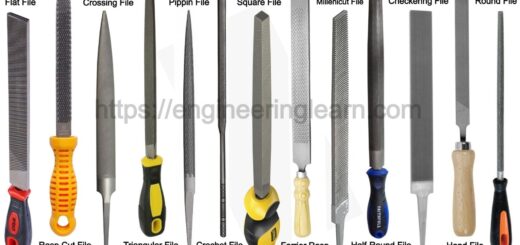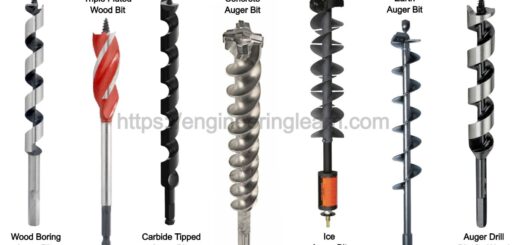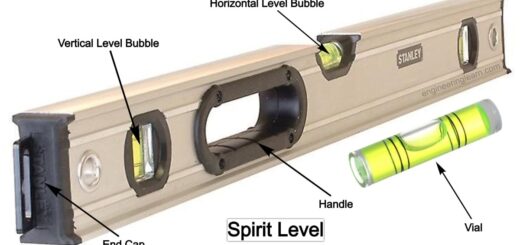Flange Alignment Tools – Types, Uses, Working, Features, Applications, Importance & Advantages [Complete Guide]
![Flange Alignment Tools - Types, Uses, Working, Features, Applications, Importance & Advantages [Complete Guide]](https://engineeringlearn.com/wp-content/uploads/2023/01/Flange-Alignment-Tools-1024x539.jpg)
Introduction
Flange Alignment Tools – Types, Uses, Working, Features, Applications, Importance & Advantages [Complete Guide]: – During pipework construction, maintenance, commissioning, or shut-down operations, flange alignment tools are mechanical or hydraulic devices used to align or realign flange joints. The flanges are typically out of alignment at initial bolting or after opening the fastening for maintenance and repair work.
The flanges must be properly oriented to fit together properly and function smoothly. In these situations, the flange alignment tools are particularly helpful. Many industries, including chemical, petrochemical, pipeline, water, wastewater, refinery, oil and gas, power, food processing, etc., use flange alignment equipment to ensure that pipes and other fittings are correctly aligned. Flange alignment tools are relatively affordable alignment solutions that simplify the alignment process.
How a Flange Alignment Tool Works?
At the point of greatest misalignment, the flange alignment tool is fastened to the flange joint. The flanges are then perfectly aligned by the tool pushing and pulling them. Various flange alignment tools are available, depending on the size of the flanges.
The following stages can be used to demonstrate how a common flange alignment tool operates:
- Find the most severe alignment issue there.
- The area with the largest misalignment should have the Flange Alignment tool attached.
- Using the strap, adjust and fasten the instrument to the pipe.
- Till the flange circumference is touched, turn the Screw handle.
- Once the flanges are pushed, pulled, and aligned, turn the handle again.
Features of Flange Alignment Tools
- Compact
- Light-weight
- Portable
- obtainable in a wide variety
- exact operation
- appropriate for both horizontal and vertical pipe flanges.
Types of Flange Alignment Tools
- Mechanical Flange Alignment Tools
- Hydraulic Flange Alignment Tools
While hydraulic flange alignment tools employ the hydraulic action of a fluid to generate forces for alignment, mechanical flange alignment tools use mechanical action to generate the pulling force. Hydraulic flange alignment tools often have a higher load carrying capacity and are better suited for large-diameter piping and pipeline flanges. For applications involving smaller diameters, lower pressure flanges, mechanical flange alignment tools are preferred.
Applications of Flange Alignment Tools
Flange alignment tools are primarily used to align both flanges to achieve a seamless union during assembly. The following are the primary uses for flange alignment tools:
- Construction
- Commissioning
- regular maintenance
- Changes to valves
- Stoppages or Outages
- Testing
Flange Alignment Tool Set
The following is typically included in a mechanical flange alignment toolset:
- one tool for flange alignment,
- one hand spanner (including 22mm socket)
- belt with a strap
- a single carry case
As opposed to a hydraulic flange alignment toolset, which includes:
- one tool for flange alignment,
- a single hydraulic hose (2m),
- single-handed pump (including pressure gauge and adapter),
- Belt Rachet, and
- a single carry case
Specifications of Flange Alignment Tool
The maximum response force of the flange alignment tools is often defined. The following are the primary factors to consider when choosing a specific flange alignment tool:
- Maximum Reaction Force or Capacity
- Bolt Size Minimum
- Bolt Hole Minimum Dimensions
- Size of the Case
- Weight
- Effort Pressure
Importance of Proper Flange Alignment
Flange joints used in pipework applications need to connect pipes seamlessly. These flange joints must be aligned with the appropriate equipment; they cannot simply be put together. A flange alignment tool simplifies this process. The tool successfully aligns the two joints with a precise fit by simultaneously attaching to both flange joints.
How should the Flange Alignment Tool be used, and the Procedure of Piping
- The equipment should be maintained and safeguarded throughout operations by the supplier’s protocol. Ensure all pathways and gaps are adequately closed up and sealed to keep grit and foreign objects out. The anti-dust coverings should be left in place until the final alignment is finished.
- The machines should be aligned by specifications once the skid or module has been levelled and grouted; following this process, they will be prepared for pipe installation (including instrumentation and electrical connection piping). To secure the machine to the skid, machine leg anchor bolts should be tightened, and the appropriate washer (Belleville washer) should be locked. The axial and transversal keys must be secured, but no welding, pinning, or other types of fixing are permitted.
- Without the necessary direct grounding connection with the welding transformer, never weld on pipelines attached to the foundation, machinery baseplates, or the machinery itself. Grounding cables shouldn’t be attached to any portion of the rotating equipment to prevent damage to the machinery supports brought on by dispersing current (base plate, pedestal, control circuit apparatus, etc.).
- Pipes can be momentarily connected to the machine while the pipework is being constructed. To prevent stress or interactions during the alignment processes, pipes should be properly supported (with temporary supports). The machine needs to be securely locked while those tasks are being done.
- All piping system activities must be finished before connecting pipes to the machine and verifying final alignment. Include pressure tests, washing, air cleansing, and permanent support (fixed, sliding and elastic supports). Piping needs to be isolated from the machine and kept warm while those activities are being performed.
- For elastic supports to be pre-loaded at the necessary load (cold position) with assembled pins, pipes must be attached to permanent supports before being fitted in the proper final position. Supports must hold up the pipes for the connection flanges to fit inside the coupling tolerances. If the client controls the plumbing supply, he must offer all pertinent details.
- Verify the gasket’s type, composition, and dimensions. The gap between the flanges must be wide enough to slide the gasket within without damaging it or the flange planes.
- Verify the flange dimensions, secure the bolts, and place the appropriate holes. Hold-down bolts should always freely glide through holes when flanges are linked without resistance, and flange bolt holes must be aligned with a maximum 3 mm offset.
- Release the elastic supports by releasing the locking pins after checking the tolerances of the machine and piping flanges, and make sure the pipes are still in place (free to spring around the fixed position).
Advantages of Flange Alignment Tools
To guarantee a leak-free bolted flange junction, flange alignment is crucial. Misalignment can be caused by a variety of factors, such as fabrication tolerances, pipe support location, and overhanging weight. Chain blocks, pulleys, come-alongs, and other rigging tools have traditionally been used to fix these. However, these techniques can be time-consuming and complex, frequently involving the development of a rigging design, the identification and certification of anchor locations, risk assessment, equipment certification, and briefing of the numerous individuals involved.
The lateral or rotational misalignment that might happen in flange joints is addressed using alignment tools. Tools provide a considerably safer, quicker, and more efficient method of realigning flanges than conventional, manual methods. Most pipe layouts can be used with these flange alignment tools. Use on ANSI/ASME, API, BS, DIN, and SPO flanges that are horizontal or vertical. They are also appropriate for offshore as well as onshore applications.
Importance of Alignment:
Vibration can be decreased and reliability can be greatly increased by properly aligning the pump shaft with the driver. The effort, knowledge, and equipment required to achieve precise alignment (tolerances of less than 0.005 in) will, for the right applications, avoid seal leakage and increase bearing life.
Conclusion
Even the most difficult flange alignment operations can be solved safely, quickly, and effectively with individual flange alignment tools. When aligning flange bolt holes, the tool’s unique tapered shaft avoids the need for prying and hammering.
A quick and efficient method for aligning any flange for any alignment task is to use the flange alignment tool. The only thing the user needs to do is turn the pin with a wrench after slipping the pin’s thin end through the holes in the two flanges that align most closely.
Image Source: – ENERPAC













